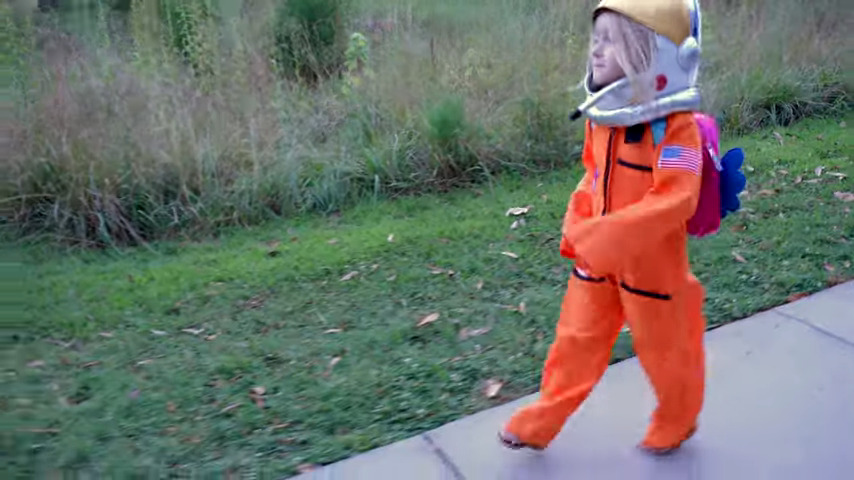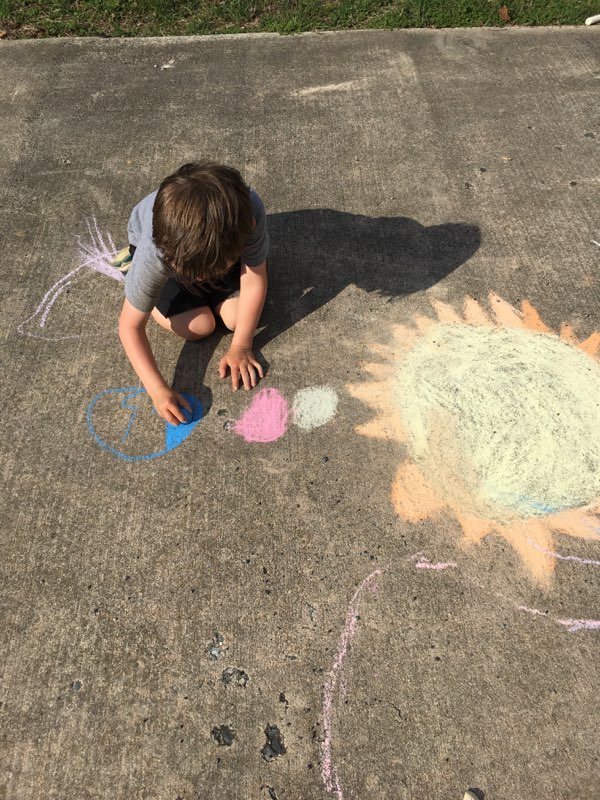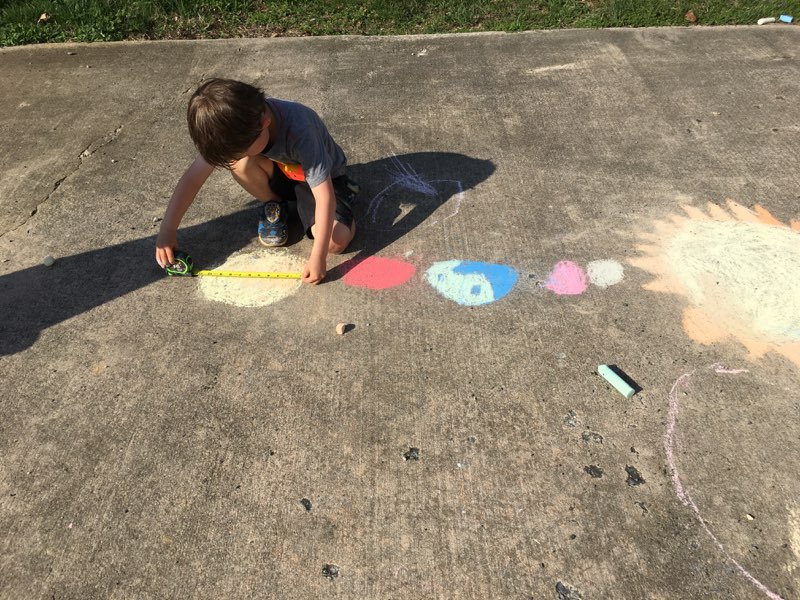Just how far is each planet from the Sun? Create a Solar System Walk to find out! To start, you’ll either need sidewalk chalk and plenty of pavement for drawing outside, or you’ll need to make cards or flags for each of the planets with paper and markers/crayons. These cards can be used outdoors or inside, and you may need tape to secure them on the ground.
The Sun
Start with the Sun on the far end of your activity space: draw or tape your Sun on the ground. The Sun is a giant star at the center of our universe and its core or center is like a huge furnace that creates a lot of heat and light, so make your Sun big and bright! Since the planets are pretty far away from the Sun — millions and billions of miles in fact — we need to create a measurement scale to use instead of the real distances. For every 10 million miles (that’s a lot of zeros), we’ll measure 1 inch so that 1 inch = 10 million miles away from the Sun.
Terrestrial Planets
The first four planets in our solar system are called rocky or terrestrial planets. This means that each of these planets have a solid center and a hard, rocky surface. Measure these distances and draw/tape your picture of each planet on the ground as follows:
-
- Mercury, the closest planet to the Sun, is still about 36 million miles away! Remember our scale of 1 inch = 10 million miles, so measure 3.6 inches from your Sun to add Mercury. Like our Moon, Mercury has lots of craters on its surface, most likely from other space objects crashing into the planet as they’re pulled towards the Sun!
- Venus, the hottest planet (with average temperatures around 800 degrees F) is about 67 million miles, so measure 6.7 inches from your Sun to add Venus. Venus has lots of thick clouds that keep heat from the Sun trapped inside, and it is one of only two planets in the solar system that rotate or spin in the opposite direction that Earth does. This means that if we were living on Venus, we would see the Sun rise and set in the opposite way we do on Earth!
- Earth, our home and the only known planet to have liquid water, is about 93 million miles from the Sun, so measure 9.3 inches for your Earth. Scientists believe this might be the perfect distance from the Sun, so that we get just enough light and heat to help plants and animals — and humans — grow! Earth is the first of the planets to have one Moon. (Mercury and Venus don’t have any.)
- Mars, the red planet, is located at about 142 million miles from the Sun. Mars looks red because its soil has lots of a metal called iron in it. Measure 14.2 inches (1.18 feet) for your Mars. You might even want draw some ice on Mars because scientists have found frozen water there too!
The Gas Giants
The next four planets in our solar system are called Gas Giants. They are made of a bunch of gases held together by their own gravity (a force that pulls something to it.) You wouldn’t be able to walk around at all on these planets, and as you may have guessed from their name, these planets are all REALLY big!
-
- Jupiter, the largest planet in our solar system, is around 484 million miles from the Sun! Measure 48.4 inches (about 4 feet) and don’t forget to add the Great Red Spot: a giant storm on Jupiter that’s lasted for hundreds of years!
- Saturn, known for its rings, is about 886 million miles from the Sun, so measure 88.6 inches (7.38 feet) for your Saturn. We might think that Saturn has just a few rings, but it actually has thousands of them, and some of Saturn’s moons are even inside the rings!
- Uranus, the only planet that rotates on its side, is about 1,784 million miles away from the Sun! Measure 178.4 inches (14.87 feet) for Uranus. Along with Venus, Uranus spins in the opposite direction that Earth does.
- Neptune, the last main planet in our solar system is about 2,795 million miles away from the Sun, so measure 279.5 inches (23.29 feet) for your Neptune. Since it is so far away, Neptune is also the coldest planet, with an average temperature of only -328 degrees F… brrr!
Of course, our solar system wouldn’t be complete without other space objects! You can add asteroids, dwarf planets (yay Pluto!) Earth’s Moon, and other planets’ moons, and even a space craft or a drawing of you as an astronaut!

On a beautiful day, get out the sidewalk chalk and create a solar system in your driveway!
Matterials Needed:
-
Sidewalk chalk or paper and markers/crayons
-
Measuring tape or yardstick/ruler
-
Tape (optional)
-
Astronaut attire (optional)



Recent Comments